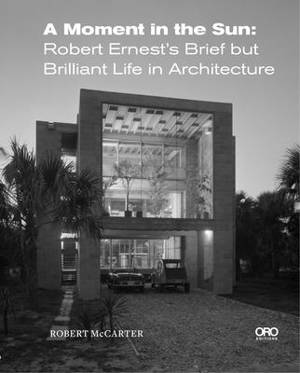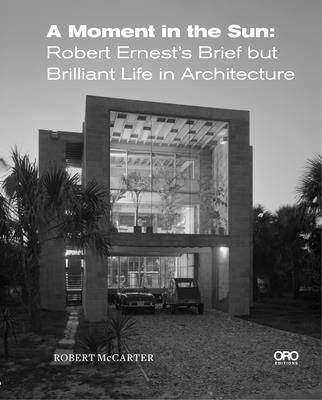
- Afhalen na 1 uur in een winkel met voorraad
- Gratis thuislevering in België vanaf € 30
- Ruim aanbod met 7 miljoen producten
- Afhalen na 1 uur in een winkel met voorraad
- Gratis thuislevering in België vanaf € 30
- Ruim aanbod met 7 miljoen producten
Zoeken
A Moment in the Sun
Robert Ernest's Brief But Brilliant Life in Architecture
Robert McCarter
Hardcover | Engels
€ 41,95
+ 83 punten
Omschrijving
Robert Ernest was an architect of rare promise and remarkable early success, whose award-winning career was cut short by cancer at age 28 in 1962. Despite the brevity of Ernest's life, his education and practice were intertwined with some of the most important figures in architecture, including his interactions with Louis I. Kahn and Paul Rudolph. Ernest's exceptional architectural designs, though honored during his lifetime with three Progressive Architecture Awards and one Record Houses Award, have never been documented in a comprehensive manner, and are now almost completely lost to disciplinary history. Yet the materials in the architect's personal and professional archives--upon which this book is almost entirely based--clearly indicate that Ernest was a remarkably talented and unusually gifted architectural designer, whose future promise and potential were inestimable. Ernest's two built works, both realized before he had turned 28, his one work built after his death, as well as the remarkably innovative unrealized projects documented in his archives, indicate that had Ernest lived to a normal lifespan, he would have without question been one of the most important architects of his generation, with the potential to design precedent-setting buildings equal to those realized by the most recognized architects in the sixty years after his death.
Specificaties
Betrokkenen
- Auteur(s):
- Uitgeverij:
Inhoud
- Aantal bladzijden:
- 180
- Taal:
- Engels
Eigenschappen
- Productcode (EAN):
- 9781954081437
- Verschijningsdatum:
- 12/12/2023
- Uitvoering:
- Hardcover
- Formaat:
- Genaaid
- Afmetingen:
- 147 mm x 224 mm
- Gewicht:
- 566 g

Alleen bij Standaard Boekhandel
+ 83 punten op je klantenkaart van Standaard Boekhandel
Beoordelingen
We publiceren alleen reviews die voldoen aan de voorwaarden voor reviews. Bekijk onze voorwaarden voor reviews.











